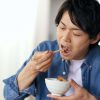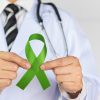What is Sarcoma – I’ve never heard of it before?!
It’s not surprising that many people are unaware of Sarcoma, as it only makes up less than 1% of adult cancers and is not even mentioned in the Singapore Cancer Registry Annual reports. It is a cancer that arises from the soft tissues like fat, muscle, nerves, blood vessels, joints (80%) or bones (20%). As soft tissues are distributed in all parts of the body, soft tissue sarcomas can appear in any body part, but more than half originate in the limbs, especially the lower ones.
What are the symptoms of Sarcoma?
For limb sarcomas, it usually presents initially as a painless gradually enlarging lump, which when advanced enough can cause pain, limb swelling and numbness due to nerves being pressed. Sarcoma that starts in the tissues within the body can remain undetected and grow to a large size, eventually causing loss of appetite, bowel blockage and bleeding. The main site of sarcoma spread is to the lungs via the bloodstream, and patients with advanced spread to the lungs may have breathlessness, chest pain, cough or blood in the sputum.
Is there any screening test to diagnose it early?
Unfortunately, at present there are no effective screening tests for the general population. Furthermore, it is so rare that too many people would have to go through unnecessary tests to find it. Thus it is important to recognize the red flags of any lump that we find on our bodies that require further medical attention and investigation:
- The lump is deep to the skin and its underlying fat
- The lump is large – 2.5cm to 5cm (golf ball size)
- The lump is increasing in size
- There is unexplained pain in the lump
How are Sarcomas treated?
The main curative treatment for soft tissue sarcomas in adults is complete surgical removal. Higher stages will require the addition of radiation therapy, either before or after the operation to reduce the risk of the sarcoma coming back. Chemotherapy, and more recently oral targeted therapy, is used to control sarcomas that have spread to other parts of the body, and relieve the tumour related symptoms. A unique feature of sarcomas is that if the spread is limited and can be removed surgically, some patients may experience a longer remission than with chemotherapy alone. When surgery is not possible, there are alternative local treatments like needle ablation and radiation to tackle these limited sites of spread.
Being a rare cancer, Sarcomas should always be treated by a team of sarcoma specialists comprising of surgeons, radiation and medical oncologists who subspecialize in treating sarcomas.
What is the outlook for patients with Sarcoma?
As a group, 65% of patients will still be alive 5 years after being diagnosed with sarcoma. When it is localized, patients have an 80% 5-year survival rate, but that goes right down to 15% for those with distant spread.
This article is contributed by Dr Jonathan Teh Yi Hui, Medical Director (Centre for Stereotactic Radiosurgery) & Senior Consultant Radiation Oncologist at Asian Alliance Radiation & Oncology (AARO). Dr Teh had also gave a talk on Sarcoma in our recent Facebook Live: https://365cps.org.sg/resourcehub/fb-health-talk-sarcoma-a-rare-cancer/






